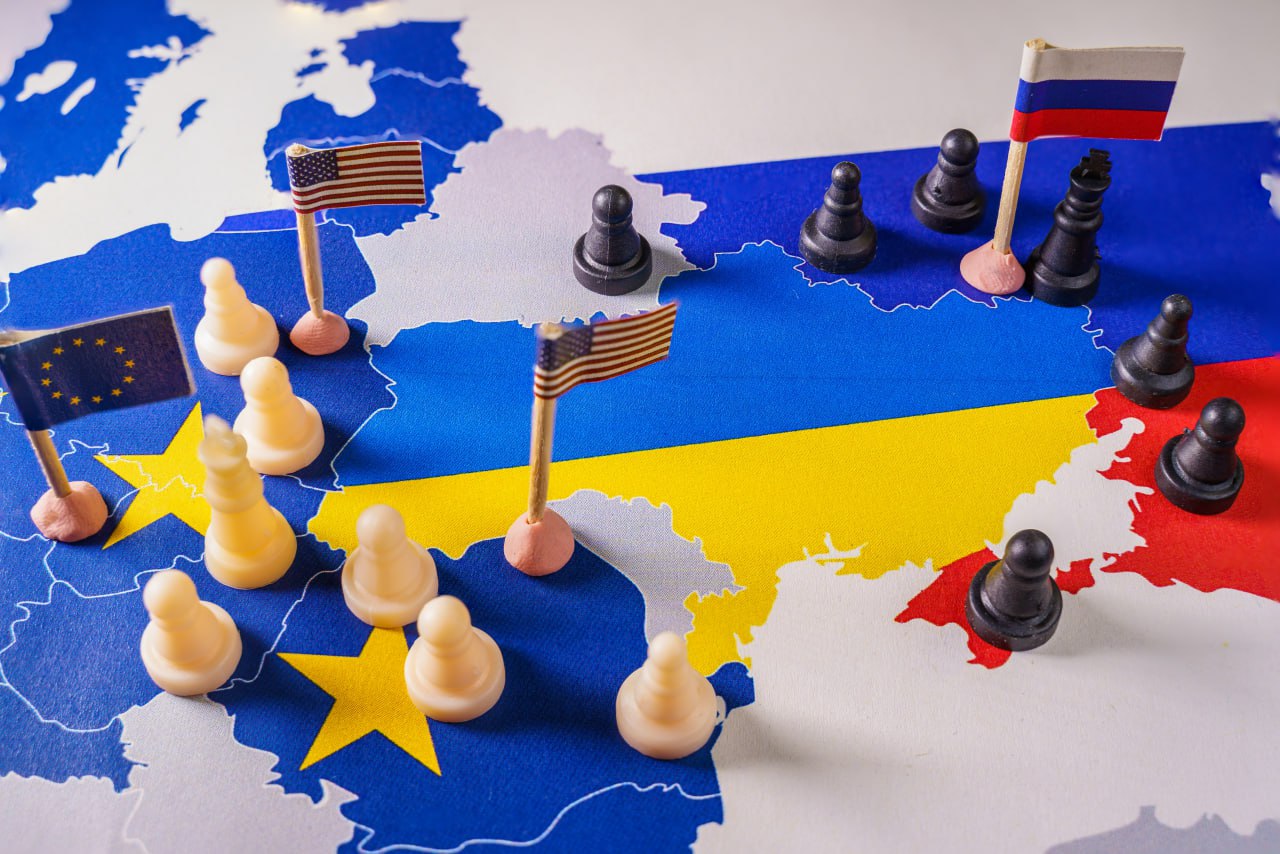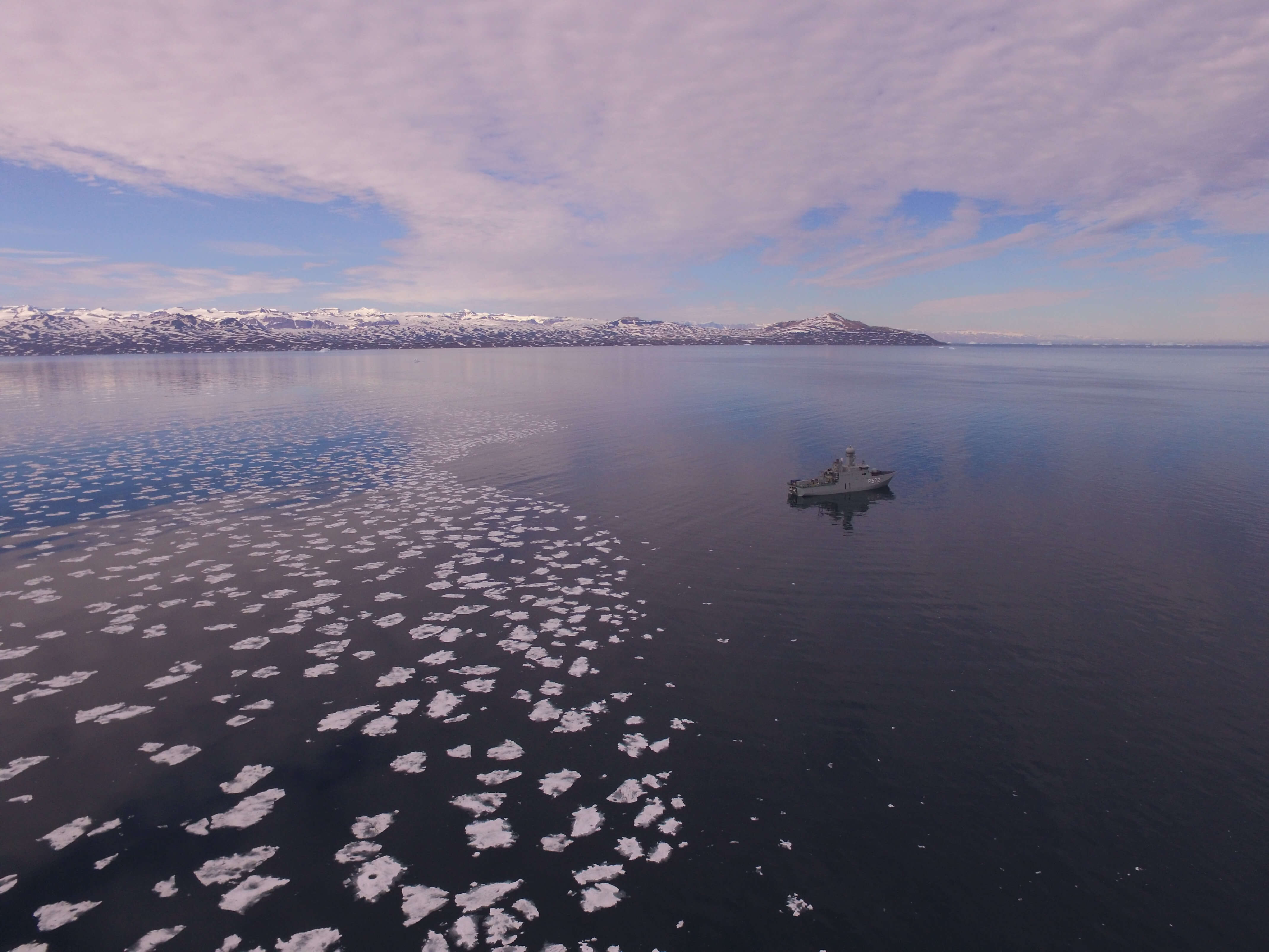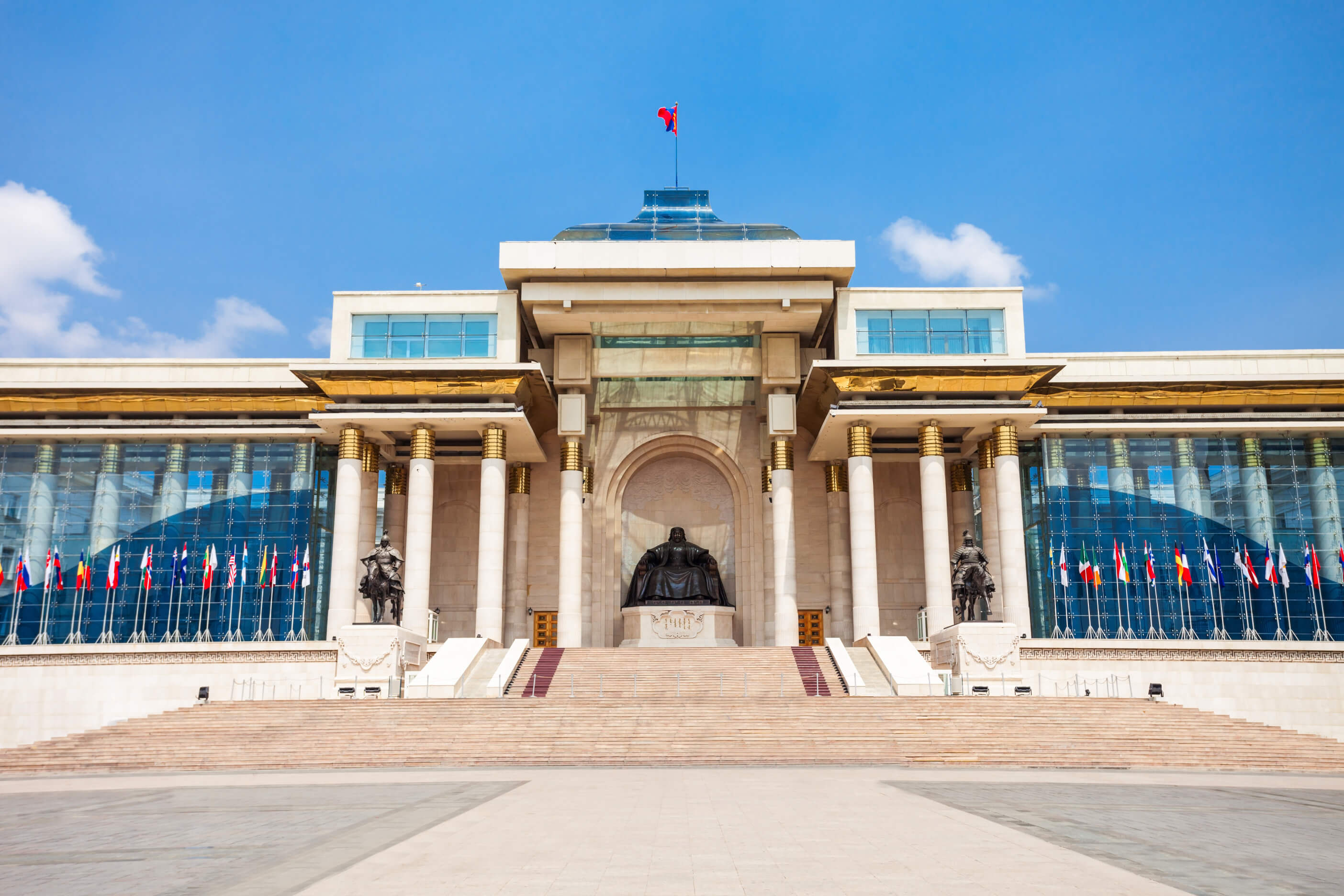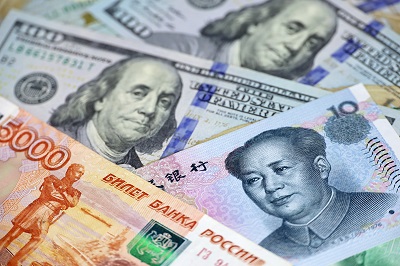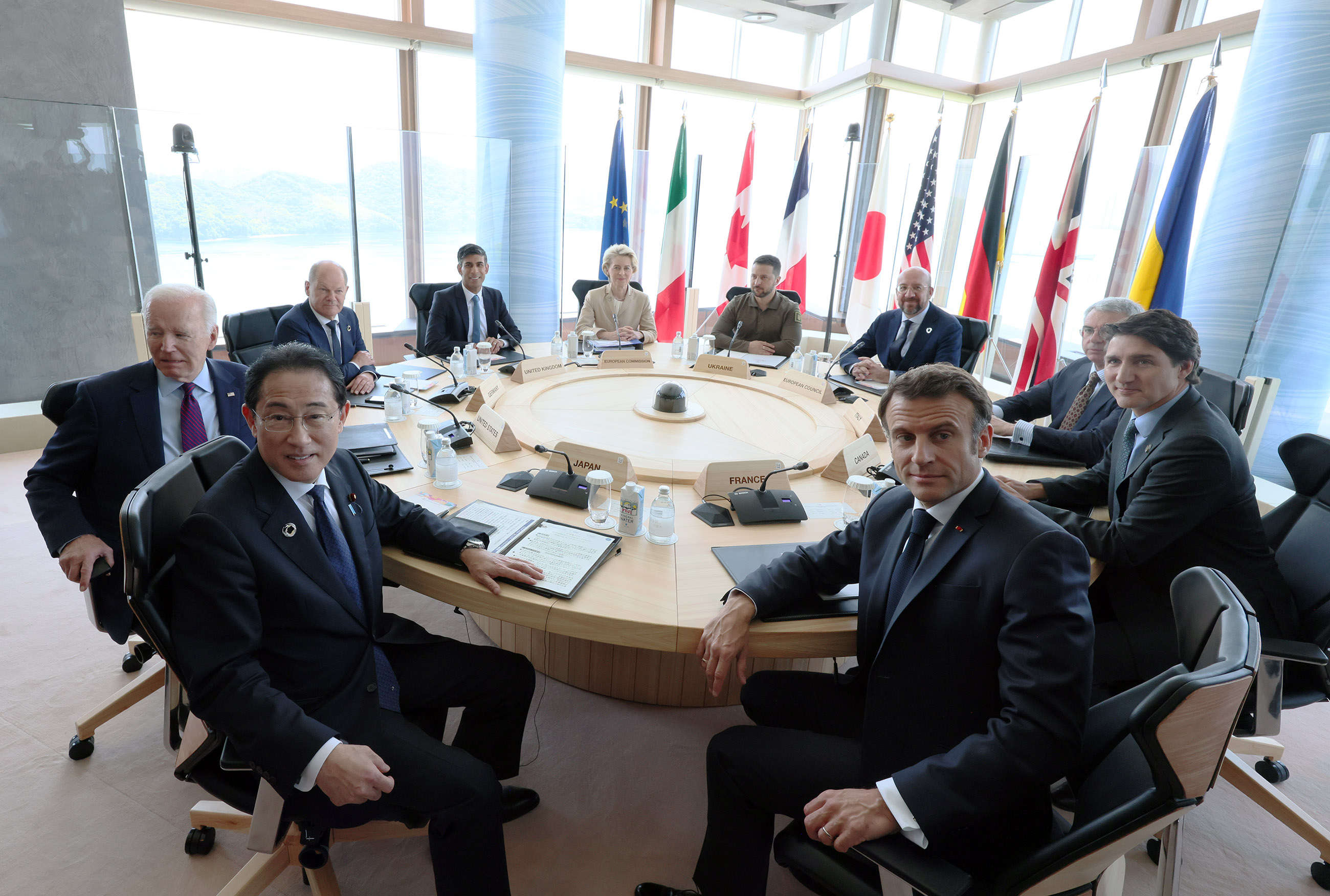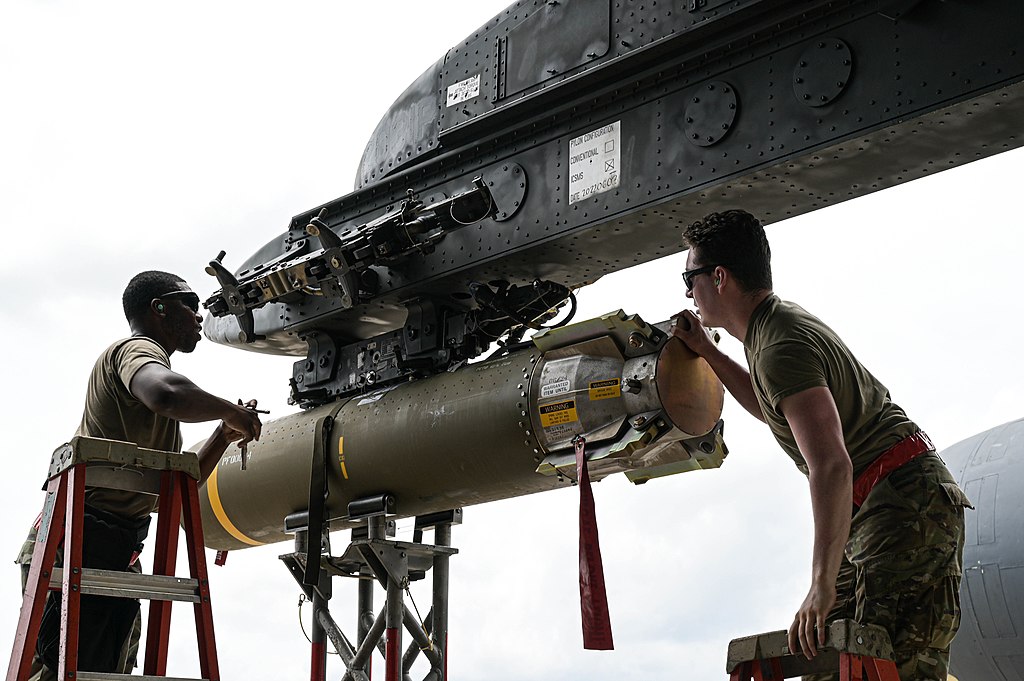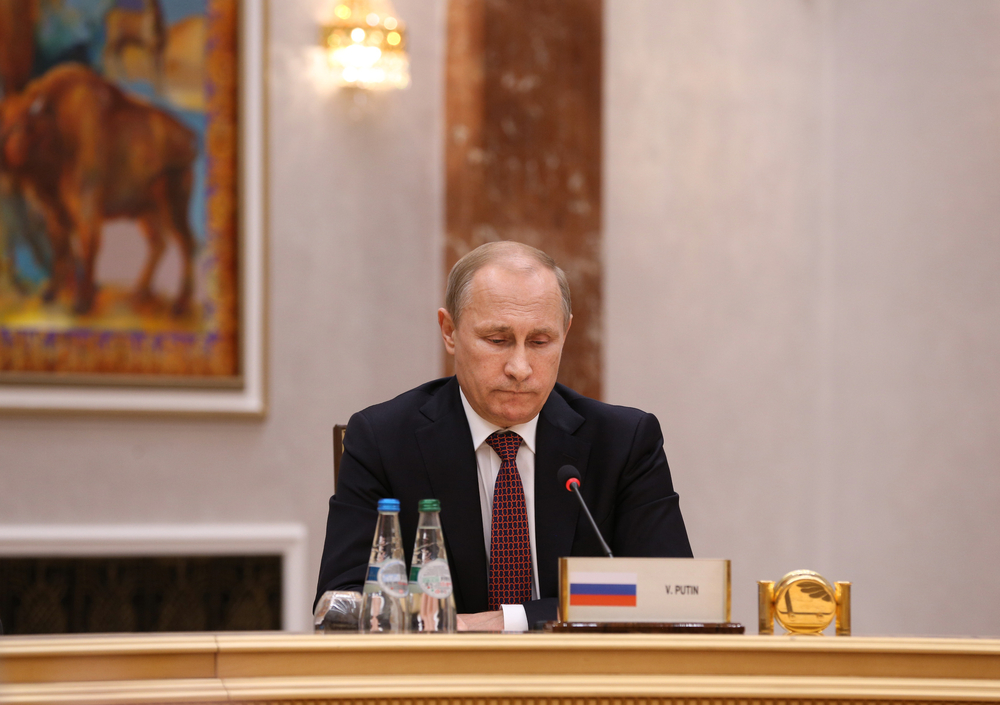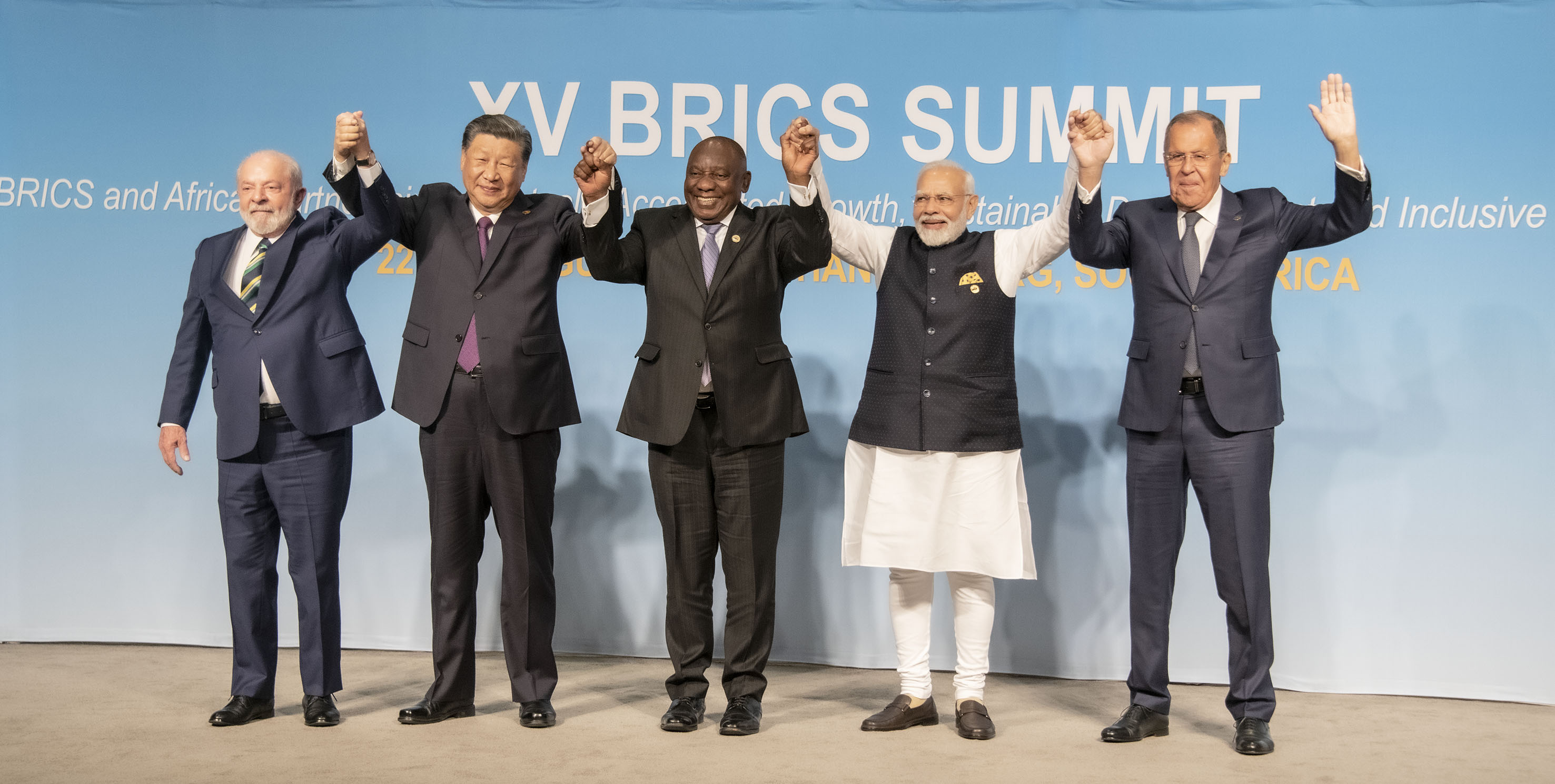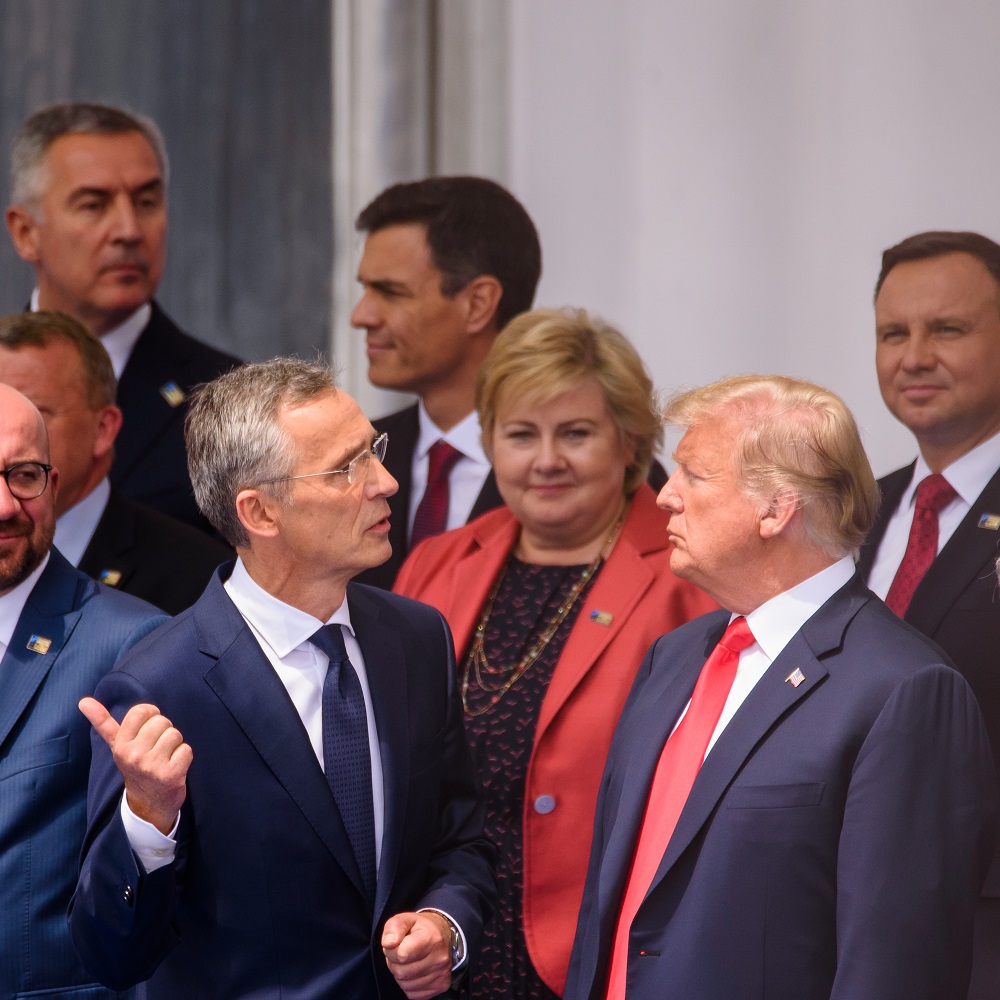The Role Of Umbrella States In The Global Nuclear Order
by Dr Tytti Erästö
I. Introduction This paper focuses on countries having extended nuclear deterrence arrangements with a nuclear-armed patron from whom they have received a nuclear security guarantee. Extended nuclear deterrence is often called a ‘nuclear umbrella’—a metaphor that hardly captures the risks inherent in nuclear deterrence practices—and the non-nuclear weapon states belonging to an alliance with such arrangements are commonly referred to as ‘umbrella’ states. As of 4 April 2023, upon the accession of Finland to the North Atlantic Treaty Organization (NATO), 31 countries were relying on the extended nuclear deterrence provided by the United States or, at the least, were accepting nuclear weapons as part of the mix of military capabilities intended to create a collective deterrent effect. In the absence of a ‘no first use’ policy, this means that the USA could use nuclear weapons to respond not only to a nuclear attack but also to an act of conventional aggression against its non-nuclear-armed allies. The USA is not the only country providing nuclear security guarantees to its allies: recently, Russia claimed to have included Belarus under its respective nuclear umbrella. Umbrella states base their security on military capabilities that include the nuclear weapons of other countries, and in some cases, they also host nuclear weapons and take part in military exercises simulating their use. Thus far, the role of the umbrella states in the global nuclear order has received relatively little attention, and they are generally categorised as non-nuclear weapon states. Their agency in maintaining or potentially changing the existing nuclear order tends to be downplayed and overshadowed by that of nuclear-armed states. However, umbrella states received some attention at the Tenth Review Conference of the Parties to the 1968 Treaty on the Non-Proliferation of Nuclear Weapons (Non-Proliferation Treaty, NPT). At the conference, held in 2022, Parties to the Treaty discussed whether to recognize ‘the importance for States parties that are part of military alliances that include nuclear-weapon States to report . . . on steps taken to reduce and eliminate the role of nuclear weapons in national and collective security doctrines’. Owing to resistance by the USA and several of its allies to create a third category of states alongside nuclear weapon states and nonnuclear weapon states, this reference was ultimately removed from the draft outcome document. The discussions at the 2022 NPT Review Conference reflected the current context, wherein greater military value is being placed on nuclear weapons, including by umbrella states. Provided that Sweden’s application to join NATO—which it submitted in 2022 together with Finland’s application—is accepted, the number of countries under the extended nuclear deterrence arrangements of the USA will increase to 32. At the same time, US allies in the Asia-Pacific region are responding to perceived threats from China and the Democratic People’s Republic of Korea (DPRK, or North Korea) with increasing calls for the redeployment of US non-strategic nuclear weapons to the region. Reflecting its concerns about potential new nuclear weapon deployments in Asia, China was vocal in opposing US nuclear hosting arrangements at the 2022 NPT Review Conference. That an increasing number of non-nuclear weapon states see security value in nuclear weapons does not bode well for the global nuclear dis armament and non-proliferation regime. The development also highlights the need to better understand how the policies of umbrella states affect the global nuclear order. That order is characterized by the continuation of nuclear deterrence practices by the world’s nine nuclear-armed states despite a shared understanding of the devastating planetary-scale humanitarian and environmental risks involved in such practices and the consequent need for nuclear disarmament. Taking a broad historical perspective, this paper explores the ways in which umbrella states both in the Asia-Pacific region and in Europe have supported prevailing nuclear deterrence practices or, at times, distanced themselves from such practices and broken ranks with their allies on relevant issues. The goal of the paper is to assess the scope of umbrella states’ agency in maintaining, shaping, and potentially challenging the global nuclear status quo in support of nuclear disarmament. II. Endorsing nuclear deterrence through policy and practice This section examines policies through which umbrella states support and contribute to the prevailing nuclear deterrence practices or have done so in the past. Such policies provide support that ranges from operational, which sees allies directly involved in such practices, to political, which is better understood in terms of moral burden-sharing. While such policies serve to maintain and legitimize the existing nuclear status quo, in some cases the endorsement by umbrella states of nuclear deterrence has moved beyond supporting the status quo to calling for new nuclear sharing arrangements or outright nuclear proliferation. Operational support for nuclear deterrence practices Umbrella states can provide operational support to their nuclear-armed patron for nuclear deterrence practices by hosting nuclear weapons and related facilities, participating in military exercises simulating nuclear strikes, conducting joint flights with strategic bombers, and engaging in planning and consultation on nuclear weapons-related issues. Given the broad nature of existing bilateral and multilateral consultation mechanisms, which also cover issues such as arms control, it is sometimes difficult to draw a boundary line between operational and political support. Nuclear weapon hosting During the cold war, the USA stationed non-strategic nuclear weapons in the territories of several of its Asia-Pacific and European allies. In Europe, the first such weapons were deployed in 1954 in the United Kingdom and West Germany to complement the deterrence provided by US strategic (long-range) nuclear weapons, which was deemed insufficient against the Soviet Union’s overwhelming conventional power. In 1958, the first nuclear sharing agreements were established, meaning that European allies would not only host US nuclear weapons but also take control of and launch such weapons against their bintended targets during times of crisis. By the mid1960s, Belgium, France, Greece, Italy, the Netherlands, and Türkiye were hosting various types of non-strategic nuclear weapon under NATO nuclear sharing arrangements. By 1971, there were 7300 forward-deployed nuclear weapons in Europe. In addition to the eight above-mentioned European countries, the USA also stationed nuclear weapons in the Danish territory of Greenland (see section III below). The deployments in Europe coincided with deployments elsewhere in the world. In Asia and the Pacific, the USA stationed nuclear weapons in the late 1950s in the Philippines, South Korea, and Taiwan, as well as in overseas territories of the USA. The largest deployments were in South Korea and the Japanese island of Okinawa, with the number of warheads hosted by the country and island respectively peaking at almost 1000 in the late 1960s. Most of these weapons had been withdrawn by the late 1970s; South Korea remained the only host state in the Asia-Pacific region in the following decade. The USA also deployed non-strategic nuclear weapons in Morocco in the 1950s and Canada in the 1960s. The Soviet Union deployed non-strategic nuclear weapons in all of its 15 republics as well as in some of its Warsaw Pact allies. Starting in the late 1950s and continuing over the following decade, non-strategic nuclear weapons were gradually deployed in Czechoslovakia, East Germany, Hungary, and Poland. All of these weapons had been withdrawn by the early 1990s. During the remainder of that decade, the strategic nuclear weapons that had been hosted in Belarus, Kazakhstan and Ukraine were also withdrawn. With the end of the cold war, forward-deployed non-strategic nuclear weapons effectively lost their raison d’être, particularly in Europe. Reflecting the new geopolitical context, in the early 1990s the USA unilaterally withdrew most of its non-strategic nuclear weapons from allied countries. In South Korea, the nuclear hosting arrangement ended completely. While NATO nuclear sharing continued, only the air-delivered B61 bombs remained and their numbers were reduced, while all other non-strategic nuclear weapon types were removed from Europe. In 2001, the B61 weapons were removed from Greece. In the years that followed, the military value of the non-strategic US nuclear weapons that still remained in five NATO countries was frequently called into question. As noted in a 2005 US study, ‘Nuclear burden sharing in NATO, in as far as host country nuclear strike missions are concerned, is on a slow but steady decline toward ending altogether’. The political momentum for ending nuclear sharing was at its highest during the administration of US president Barack Obama, whose vision for a nuclear weapon-free world arguably inspired some allies to more vocally argue for the withdrawal of non-strategic nuclear weapons from Europe. Yet, the same US administration also pushed back against and, as it seems, silenced such critical voices (see section III below). Today, an estimated 100 non-strategic nuclear weapons remain stationed in five European countries—Belgium, Germany, Italy, the Netherlands, and Türkiye—and the USA is modernizing its B61 bombs. The nuclear weapon hosting states, with the exception of Türkiye, plan to replace their ageing dual-capable aircraft with F-35 aircraft, which will enable use of the precision strike feature of the new B61-12 bombs. As before, allies are responsible for delivering these weapons during a crisis. Since 1976, US gravity bombs in Europe have included electronic locks (permissive action links, PALs) to reduce the risk of unauthorized use. The delegation of authority for nuclear weapon use from the USA to its allies is based on a dual key system: following an agreement by the NATO Nuclear Planning Group (NPG) and authorization by the US president, US military personnel at allied bases would deactivate the PALs, handing over control of the weapons to pilots of the weapon hosting states. As noted above, China recently raised its opposition to NATO nuclear weapon hosting practices, reflecting its apparent concerns about the prospect of US non-strategic nuclear weapons being redeployed in Asia. Russia, alongside China and other countries, has long argued that NATO’s nuclear sharing policy is not in accordance with Articles I and II of the NPT. Russia’s normative case against NATO nuclear sharing is, however, currently undermined by its own plans to share nuclear weapons with Belarus. Echoing the arguments of the USA in this regard, Russia maintains that the weapons will remain under Russian control, hence the arrangement—announced in March 2023—will be in line with international non-proliferation obligations. According to Russian President Vladimir Putin, the construction of nuclear weapon storage facilities in Belarus is to be completed by July 2023. Russia reportedly provided Belarus with dual capable Iskander missiles and modified Belarusian Su-25 bombers to enable them to carry nuclear weapons prior to the March announcement. Military exercises simulating tactical nuclear strikes Some umbrella states that do not host nuclear weapons nevertheless actively contribute to nuclear sharing by taking part in military exercises involving dual-capable aircraft. NATO’s Support of Nuclear Operations with Conventional Air Tactics (SNOWCAT) programme comprises a unique form of such participation. In SNOWCAT missions, allies provide conventional aircraft to escort dual-capable aircraft, and they also provide surveillance and refuelling. The aim of the exercises is to practise nuclear strike operations. In 2022, 14 allies were reported as having participated in the annual SNOWCAT exercise called Steadfast Noon. While NATO does not reveal the participating countries, in previous years they have reportedly included at least Czechia and Poland alongside host states and nuclear-armed states. In addition, Denmark confirmed its participation in the 2022 exercise, and Greece too seems to have taken part. Joint flights with strategic bombers US nuclear sharing arrangements are limited to Europe, hence there is no programme comparable to SNOWCAT in other regions. According to a 2011 report, ‘There are no nuclear weapons–related exercises conducted between the United States and the military forces’ in umbrella states in Asia. However, US allies in the Asia-Pacific region frequently fly with US strategic B-2 and B-52 bombers to signal deterrence to regional adversaries. For example, US B-52 bombers were ‘met with and escorted by’ Japanese F-15J combat aircraft in August 2021, and accompanied by South Korean F-35As and F-15Ks in December 2022. Australia has also taken part in joint flights with US strategic aircraft, as have NATO allies in Europe. Even countries that are not part of extended nuclear deterrence arrangements—including Indonesia, Israel, Saudi Arabia and Sweden—have been involved in this practice. Thus far, the B-52s used in regional operations in Asia and the Pacific have only been deployed rotationally in the US territory of Guam. However, Australia is currently expanding a military air base in its Northern Territory with the intention of hosting US B-52 bombers. Once completed, the base would appear to be only the second one of its kind outside US territory (after Royal Air Force, RAF, Fairford in the UK) and the first one of its kind in an umbrella state. Consultation and planning All NATO members other than France are involved in collective decision making on nuclear weapon-related issues through their participation in the NPG. The NPG ‘provides a forum in which NATO member countries can participate in the development of the Alliance’s nuclear policy and in decisions on NATO’s nuclear posture’. Discussions under the NPG cover issues such as ‘the overall effectiveness of NATO’s nuclear deterrent, the safety, security and survivability of nuclear weapons, and communications and information systems’. The mandate of the NPG also covers arms control and non-proliferation. Various observers have characterized the group’s main function broadly in terms of information-sharing and the establishment of ‘NATO’s common nuclear deterrence culture’. While the NATO line is that participation in the NPG is not limited to members that maintain nuclear weapons, one source points to ‘an unwritten rule that only the stationing countries speak up in NPG meetings’. The NPG was established in 1966 primarily in response to the concerns of European host states about plans for the use of the non-strategic nuclear weapons on their territory and the desire of these countries to become more involved in relevant decision making. After having been first limited to host states, the NPG was later expanded to include other NATO allies. The participation of the latter countries was viewed by nuclear weapon states as a valuable contribution to political or moral burden-sharing. With the salience of nuclear weapons decreasing for much of the post-cold-war period, NPG meetings became less frequent. In addition, during this period, unlike during the cold war, the group’s work no longer involved ‘nuclear planning in the strict sense of targeting’. However, the role of nuclear weapons in NATO policy has been increasing following Russia’s invasions of Ukraine in 2014 and 2022, which has also impacted the NPG’s work and increased the group’s visibility. For a long time, nuclear consultations were unique to NATO; no mechanism similar to the NPG existed between the USA and its allies in the Asia-Pacific region. In the words of one observer, ‘US alliance relations in Asia as a whole developed in a considerably more hierarchical fashion, arranged in a hub-and-spoke model in which Washington dealt bilaterally and from a position of strength with each allied government rather than collectively through a single multilateral alliance’. However, over the past decade, the USA has also conducted bilateral consultations with Australia, Japan, and South Korea, based on these allies’ desire to gain more insight into and influence in US nuclear weapons-related policy. Plans have also been made to extend such consultations to a trilateral (Japan, South Korea, and the USA) or a quadrilateral (as for trilateral but including Australia) format. One forum for bilateral nuclear consultation is the US–Japan Extended Deterrence Dialogue, which was established in 2010. Similarly, to the NPG, the dialogue ‘provides an opportunity . . . to discuss regional security, Alliance defense posture, nuclear and missile defense policy, and arms control issues, and to engage in an in-depth exchange of views on means to enhance as well as deepen mutual understanding on alliance deterrence’. South Korea and the USA, in turn, have conducted nuclear consultations under their Deterrence Strategy Committee and Extended Deterrence Strategy and Consultation Group. These consultations were apparently expanded or replaced with a new—more substantive—mechanism in April 2023, when US President Joe Biden announced in a joint press briefing with his South Korean counterpart, President Yoon Suk-Yeol, that the two countries had ‘agreed to establish a Nuclear Consultative Group to map out a specific plan to operate the new extended deterrence system’. In addition to sharing information on ‘mutual nuclear assets and intelligence’, this new system would also cover ‘ways to plan and execute joint operations that combine Korea’s state-of-the-art conventional forces with the US’s nuclear capabilities’. The announcement followed controversial statements by the South Korean president that suggested the country might be considering the acquisition of nuclear weapons of its own (see below). Possibly reflective of the greater need for reassurance related to extended nuclear deterrence based mainly on US strategic nuclear weapons, the bilateral consultations of the USA with both Japan and South Korea have included visits and tours to familiarize these allies with US strategic weapons delivery vehicles. Moreover, the new US–South Korean Nuclear Consultative Group that was announced in April includes visits by South Korean officials to US nuclear submarines in South Korean ports. Assessment of the degree of operational involvement of umbrella states in nuclear deterrence The hosting of nuclear weapons can be seen to constitute a particularly high level of commitment to nuclear deterrence—especially in the case of NATO nuclear sharing, which involves the handing over of control of nuclear weapons by the USA to an ally and the potential execution of a nuclear strike by that ally during a crisis. The host state takes on an enormous burden in sacrificing its own security, as military bases with nuclear weapon infrastructure and housing dual-capable aircraft for nuclear strike missions are logical targets for adversaries in wartime. Although European host states would ultimately be responsible for dropping B61 bombs on their target locations, other allies’ provision of support for the nuclear strike mission under the SNOWCAT programme must also be seen as a direct operational contribution to nuclear deterrence practices. Assessment of the degree of operational involvement of umbrella states in nuclear deterrence Political support for nuclear deterrence Acceptance of a nuclear security guarantee constitutes political support— albeit passive—for existing nuclear deterrence practices. Typically, this kind of support involves endorsing the strategy documents of an alliance that stress the need for nuclear deterrence or as discussed above, participating in allied nuclear consultations. Some countries choose to go further in their political support by making public statements highlighting the perceived security value of nuclear weapons. Another form of political support by umbrella states of nuclear deterrence practices is signalling opposition to multilateral initiatives that question the legitimacy of nuclear deterrence. Statements supporting extended nuclear deterrence Umbrella states tend to keep a low profile regarding the role of nuclear weapons in their national security policies. In most cases, their national security strategies do not even mention nuclear deterrence and nuclear weapons are either discussed in relation to the perceived threats posed by adversaries or viewed exclusively as objects of arms control and disarmament. In multilateral forums, nuclear-allied countries usually do not wish to stand out from non-nuclear weapon states. In some cases, however, umbrella states do explicitly stress the importance of nuclear weapons and extended nuclear deterrence for their national security. A recent example of public endorsement of nuclear deterrence is the German response to the criticism by China, Russia, and several nonnuclear weapon states of NATO nuclear sharing arrangements at the 2022 NPT Review Conference. Using its right of reply, Germany said that NATO nuclear sharing is ‘fully consistent and compliant with the NPT’, adding that the practice was ‘put in place well before the NPT entered into force’ and that it ‘has long been accepted and publicly understood by all States Parties to the NPT’. At the same conference, a representative of Hungary defended nuclear sharing by saying that it contributes to non-proliferation by ‘remov[ing] incentives for nations to develop their own nuclear deterrence capabilities’. Both of these arguments have long been made by NATO to justify nuclear sharing. When comparing the defence white papers of umbrella states, Australia and Germany stand out for the reason that both countries explicitly refer to extended nuclear deterrence as a source of national security. Germany, in addition to repeating key tenets of NATO’s deterrence policy—for example that ‘The strategic nuclear capabilities of NATO, and in particular those of the United States, are the ultimate guarantee of the security of its members’— also states in its 2016 white paper on security policy and the future of the Bundeswehr that, ‘Through nuclear sharing, Germany continues to be an integral part of NATO’s nuclear policy and planning’. Australia, in its 2020 Defence Strategic Update, states that ‘Only the nuclear and conventional capabilities of the United States can offer effective deterrence against the possibility of nuclear threats against Australia’. Statements supporting extended nuclear deterrence can be viewed as examples of moral burden-sharing, particularly when they are made in forums such as the NPT Review Conference, where nuclear deterrence practices are subject to regular criticism by non-nuclear weapon states. On other occasions—such as when they are made in connection with national security documents—these statements indicate a strong belief that nuclear weapons are an integral part of allied deterrence. Opposition to the Treaty on the Prohibition of Nuclear Weapons Since 2016, an important show of solidarity among the nuclear weapon states and their allies has been to cast votes against the United Nations General Assembly annual resolution endorsing the 2017 Treaty on the Prohibition of Nuclear Weapons (TPNW). The TPNW not only questions the legitim acy of existing nuclear deterrence practices but also seeks to stigmatize nuclear weapons globally through its comprehensive ban on nuclear weapons, including on the threat of their use. Not surprisingly, nuclear-armed states have fervently opposed the Treaty, as the credibility of their nuclear deterrents depends on their readiness to threaten nuclear weapon use. The USA has warned its allies against supporting the TPNW or participating in related meetings. For example, in 2016 it strongly encouraged NATO member countries to vote against UN General Assembly Resolution 71/258, which called for negotiations on a treaty banning nuclear weapons, arguing that such efforts were ‘fundamentally at odds with NATO’s basic policies on deterrence’. In that year, all umbrella states cast a negative vote on the resolution, with the exception of the Netherlands, which abstained from voting (see the section ‘Engagement by umbrella states with the Treaty on the Prohibition of Nuclear Weapons’ below). Similarly, all umbrella states, with the exception of the Netherlands, were absent from the TPNW negotiations in 2017; Albania, Poland and South Korea joined the USA in protesting against these negotiations. With only a few exceptions, umbrella states have also uniformly voted against the annual UN General Assembly resolution expressing support for the Treaty. Arguably in line with their decision to apply for NATO membership, in 2022 Finland and Sweden also voted against the resolution for the first time. Calls to expand nuclear deterrence practices Some countries without existing nuclear sharing arrangements have expressed an interest in hosting nuclear weapons. In 2020, before the recent reports of nuclear sharing between Belarus and Russia (see the section ‘Nuclear weapon hosting’ above), the president of Belarus, Alexander Lukashenko, had offered to host Russian nuclear weapons as a response to the potential deployment of US nuclear weapons to Poland. Belarus’ interest in positioning itself under the Russian nuclear umbrella was in fact first articulated more than 20 years ago. Poland has on several occasions expressed an interest in hosting US nuclear weapons. For example, in October 2022, following reports of Russian nuclear sharing with Belarus, the president of Poland, Andrzej Duda said that ‘a potential opportunity’ for Poland to participate in nuclear sharing had been discussed with the USA. While the US leadership has not confirmed that such discussions took place, in May 2020 the US ambassador to Poland suggested that ‘perhaps Poland . . . could house the capabilities’ in case Germany were to ‘reduce its nuclear potential and weaken NATO’ by ending its nuclear sharing arrangements with the USA. Stationing US nuclear weapons in former Warsaw Pact countries such as Poland would go against the 1997 Founding Act on Mutual Relations, Cooperation and Security between NATO and the Russian Federation, in which NATO member countries reiterated that they have ‘no intention, no plan and no reason to deploy nuclear weapons on the territory of new members’. Regarding the Asia-Pacific region, the president of South Korea, Yoon Suk-Yeol, said in an unprecedented statement made in January 2023 that if the nuclear threat from North Korea grows, his country might ‘introduce tactical nuclear weapons or build them on our own’, adding that ‘we can have our own nuclear weapons pretty quickly, given our scientific and technological capabilities’. While there has been a long-standing debate in South Korea on both the reintroduction of US non-strategic weapons and the development of an indigenous nuclear weapon programme, and popular support for both proposals, this was the first time such a statement was made by a high-level government official. Similarly, discussions on the possibility of hosting US nuclear weapons in a manner based on the NATO model have taken place in Japan. Thus far the Japanese government has rejected the idea. The above-mentioned calls to establish new nuclear weapon hosting arrangements suggest that the umbrella states in question view the existing extended nuclear deterrence practices as insufficient. While these states may view forward-deployed nuclear weapons themselves as key to strengthening deterrence, they might also view them as instruments of alliance cohesion— meaning that, in principle, nuclear weapons could be replaced with any other military system requiring the permanent deployment of US troops on allied territory. Statements supporting indigenous nuclear weapon development go further, indicating the desire of an umbrella state to assume sovereign authority over national nuclear deterrence practices through proliferation. While such statements may be used to appeal to domestic constituencies or to pressure the nuclear-armed patron to strengthen its extended deterrence commitments, they undermine the global non-proliferation norm, particularly if not met with strong international condemnation. III. Stepping back from nuclear deterrence policies This section recounts and analyses the ways in which some umbrella states, or government officials in such states, have at times sought to challenge or distance themselves from existing nuclear deterrence practices and broken ranks with allies on relevant issues, often in a manner considered controversial within the alliance. In many such cases, govern mental policymaking has mirrored anti-nuclear sentiments in the population. Bans on or limits to the stationing of nuclear weapons on national territory The political reservations of Nordic NATO members about the stationing of nuclear weapons on or their transit through their national territories date back to the late 1950s—a time of strong popular sentiment against nuclear weapons inspired by, for example, the Russell–Einstein Manifesto of 1955 and international efforts at the UN to control and eliminate nuclear weapons. In Spain, similar reservations took shape in the early 1980s, when the antinuclear movement was strong. Political declarations on potential future deployment or transit Denmark, Iceland, Norway, and Spain have long had policies that prohibit nuclear weapons being stationed on their national territories. While the policies of Denmark, Norway and Spain leave open the option of allowing the stationing of nuclear weapons during times of war, Iceland’s prohibition seems to apply in all situations. Danish reservations about nuclear deterrence have been influenced by domestic opposition to nuclear weapons and were captured in a policy that was adopted in May 1957. According to the policy, Denmark would not allow ‘the deployment and transit of nuclear weapons on its territory’, in particular Greenland, where, as a result of a 1951 bilateral defence agreement, the USA was allowed to operate military bases. However, this declaratory policy was contradicted by a secret agreement, according to which the USA was not obliged to inform Denmark of its deployment of nuclear weapons on US bases in Greenland. In practice, Denmark thus allowed both the stationing of US nuclear weapons at Thule Air Base in 1958–1965 and overflights of nuclear armed bombers in Greenland in the 1960s. Although the veil of secrecy was briefly lifted in 1968 when a US B-52 bomber crashed in Greenland, it was not until the 1990s that the full scale of the clandestine activities came to light, causing a political scandal in Denmark. In Norway, a 1957 motion by the governing Labour Party held that ‘nuclear weapons must not be placed on Norwegian territory’, a decision that the country’s prime minister reiterated at a NATO meeting in December 1957. In 1960 it was specified that this policy applied in peacetime only. At the time, Norwegian government officials also repeatedly said that Norway would not allow visits by naval vessels that had nuclear weapons on board. In a more recent reiteration of the policy, a 2017 white paper on Norwegian foreign and security policy states that ‘nuclear weapons are not to be stationed on Norwegian territory in peacetime’ and, furthermore, that ‘foreign military vessels that call at Norwegian ports must not have nuclear weapons on board’. Norway did not enforce this policy during the cold war by preventing US surface ships—which no longer carry nuclear weapons but at the time would neither confirm nor deny they were carrying them—from entering their ports. Denmark did not enforce its ban on the transit of nuclear weapons on its territory either. Iceland’s policy of not allowing nuclear weapons on its soil is less well known than that of the two other Nordic NATO members. It has, however, been consistently expressed by successive Icelandic foreign ministers since 1964 and codified in parliamentary resolutions since at least 1985. A 2016 resolution reconfirmed that part of the country’s national security policy is ‘To ensure that Iceland and its territorial waters are declared free from nuclear weapons . . .’. Spain hosted US strategic bombers and nuclear-armed submarines during the dictatorship of Francisco Franco (1939–75). When Spain joined NATO in 1982, it did so on the condition—set by the Spanish parliament—that nuclear weapons would not be brought to the country. The 1986 referendum that confirmed the country’s NATO membership mentioned the prohibition of ‘the deployment, storing or the introduction of nuclear weapons in Spanish soil’ as a precondition to this decision. However, the transit of nuclear armed vessels through Spanish waters—which would have in any case been difficult to monitor—was not prohibited. The political reservations of the four NATO member countries discussed above stand out as the most visible expressions of scepticism about the security benefits of extended nuclear deterrence within the alliance. The practical impact of such declaratory statements has been called into question by the case of Denmark, where the declaratory policy was contradicted by a clandestine agreement. That all of these countries—with the apparent exception of Iceland—have not ruled out the possibility of hosting nuclear weapons during times of war can also be seen to reduce the normative significance of their reservations about such hosting. Legislation prohibiting nuclear weapons on national territory Lithuania’s constitution unambiguously states that ‘There may not be any weapons of mass destruction’ on its territory. Although it is legally binding, applicable in wartime and would seem to represent the strongest stance possible against nuclear sharing, this prohibition is disconnected from Lithuania’s political statements, which are silent on this part of the constitution and have even, at times, highlighted the value of nuclear weapons to NATO’s deterrence policy. One explanation for this might be that Lithuania’s constitution—which was drafted in 1992 and thus preceded the country’s NATO accession in 2004—signalled sovereign independence from the Soviet Union rather than marked distance from NATO nuclear policies. New Zealand is a former nuclear umbrella state that passed legislation against the introduction of nuclear weapons on its national territory in 1984. The country had been part of a trilateral defence alliance under the 1951 ANZUS Treaty. More specifically, New Zealand declared itself a nuclear weapon-free zone and introduced relevant legislation, including a prohibition on nuclear-capable vessels from entering the country’s ports. Given the US policy at the time of neither confirming nor denying its ships were armed with nuclear weapons, US Navy vessels could not dock in the harbours of New Zealand. In February 1985, New Zealand demonstrated its readiness to enforce its policy by turning down the request of a US missile destroyer to dock. The USA reacted by cancelling its security guarantee to New Zealand in August 1986. Although New Zealand signalled its willingness to remain part of the ANZUS Treaty, the position of the USA was that it was not feasible for an ally to enjoy the benefits of a conventional defence partnership while renouncing its nuclear dimension. As suggested by one observer, the USA’s severe response to New Zealand’s anti-nuclear policy reflected concerns by the USA that, if it would accept the policy, this ‘could generate eventual ripples of pressures for unilateral disarmament throughout other western societies’. In sum, national legislation prohibiting the stationing and transit of nuclear weapons in or through a given umbrella state’s territory can be seen to constitute a strong prohibition against nuclear weapon hosting. Yet, the political significance of such a prohibition is diminished if not backed up by corresponding declaratory policy, as exemplified by the case of Lithuania. In contrast, the combination of legal and political prohibition and its practical enforcement by New Zealand was deemed excessive by the USA, which ultimately punished its ally by terminating the conventional security guarantee. A similar crisis over the transit of nuclear weapons is unlikely to occur today given that the USA stopped deploying nuclear weapons on surface ships in the early 1990s. Instead, potential controversies over allies’ anti-nuclear weapon policies are now more likely to arise in connection with their approach to the TPNW (see the section ‘Engagement of umbrella states with the Treaty on the Prohibition of nuclear weapons’ below). Political decisions to end nuclear weapons hosting By the end of the cold war, several nuclear weapon hosting arrangements had been terminated. Arguably, these arrangements were ended largely on the basis of unilateral decisions taken by Russia and the USA; however, in at least two cases—Canada and Greece—the initiative clearly came from host states. Following a heated domestic debate and a change of government, Canada decided in 1963 to host US nuclear warheads that were to be fitted with the Bomarc anti-aircraft missiles that Canada had previously bought from the USA. However, only six years later, in 1969, a new Canadian government reversed the hosting policy. It did so in line with its ratification in that same year of the newly negotiated NPT (Canada was one of the first countries to ratify the Treaty). As a result, by 1972 all US nuclear warheads reserved for the anti-aircraft missiles had been withdrawn from Canada. However, the country retained nuclear-armed air-to-air Genie rockets deliverable by Voodoo aircraft until 1984. Greece, which had hosted US non-strategic nuclear weapons since the early days of the cold war, decided at the turn of this century not to replace its ageing A-7E dual-capable aircraft with a new model that could have continued the country’s nuclear sharing arrangements with the USA. As a result of this decision, US nuclear weapons were quietly removed from the country in 2001, putting an end to the arrangements. The apparent lack of public discussion on the decision—or any discussion that reached an international audience—contrasts with the vocal but ineffectual calls made by Germany a decade later for the withdrawal of such weapons. Calls to end nuclear sharing The military value of the US non-strategic nuclear weapons in Europe was frequently called into question in the post-cold-war period, with arguments against them growing louder in the late 2000s. At this time, two successive German foreign ministers—Frank-Walter Steinmeier and Guido Westerwelle—openly called for an end to nuclear sharing in Germany. As Steinmeier said in 2009, ‘These weapons are militarily obsolete today’, which is why he would seek to ensure that the remaining US warheads ‘are removed from Germany’. The following year, Westerwelle said that the nuclear weapons in Germany were ‘a relic of the Cold War’ that ‘no longer serve a military purpose’ and that the German government was ‘working to create the conditions for their removal’ in cooperation with allies and partners. In February 2010, Germany—together with Belgium, Luxembourg, the Netherlands, and Norway—wrote a letter to the NATO secretary-general calling for the inclusion of non-strategic nuclear weapons in arms control agreements. The Benelux countries and Norway also highlighted this issue in their national statements but more cautiously than Germany, often linking it to reciprocal steps being taken by Russia. These high-level efforts to change NATO nuclear sharing practices ultimately proved unsuccessful. Ironically, the same US administration that arguably inspired the German position against the hosting of non-strategic nuclear weapons also strongly pushed back against this position. The former US Secretary of State Hillary Clinton responded to the above-mentioned letter by saying that ‘as long as nuclear weapons exist, NATO will remain a nuclear alliance’, stressing the importance of ‘sharing nuclear risks and responsibilities’. At the same time, she stressed the need for Russia to make reciprocal reductions as a condition for the withdrawal of tactical nuclear weapons from Europe. The definition of NATO as a nuclear alliance was included in its 2010 Strategic Concept, which ultimately made it harder for Germany to push for an end to nuclear sharing. Although the debate on the merits of nuclear sharing continued in the country after that, Germany’s continued participation in the practice appeared to be confirmed with the March 2022 decision to replace its ageing dual-capable Tornado aircraft with F-35s. ‘Footnote politics’ in the 1980s By the early 1980s social democratic parties in Europe, particularly in the Nordic countries, had become critical of mainstream NATO nuclear policy, a sentiment that grew stronger during the early years of the US administration of President Ronald Reagan. Because of the leverage of a coalition of centre-left opposition parties over the liberal-conservative government’s foreign policy at the time, Denmark stood out from other NATO members by frequently dissociating itself from allied policy on nuclear issues. The Danish government—in addition to making public expressions of dissent— sometimes inserted footnotes in NATO communiqués, so its policy came to be known as ‘footnote policy’. Initially, the most contentious issue for Denmark was NATO’s ‘dual-track’ decision, adopted in December 1979. This decision included a plan for the USA to deploy intermediate-range nuclear forces (INF) in Western Europe in 1983 unless the Soviet Union agreed to discuss its respective SS-20 missiles in arms control negotiations. The Danish foreign minister had proposed postponing the decision, but it went ahead. In a 1982 NPG meeting communiqué, Denmark added a footnote expressing support for the Soviet proposal for a compromise solution to the INF crisis. Denmark’s position deviated from that of the other NATO members—they supported the Reagan administration’s ‘zero solution’, which called for the elimination of all land-based INF missiles in Europe. Danish opposition to the INF deployments included a parliamentary decision to suspend their funding. When the INF missiles were finally deployed, Denmark dissociated itself from the NATO policy by placing a footnote on a NATO communiqué describing it. Other issues of contention included the US request that NATO allies endorse its Strategic Defense Initiative, which both Denmark and Norway opposed through footnote politics, and the proposal for a Nordic nuclear weapon-free zone. Although the Danish government had for most of the 1980s been driven by the opposition parties to agree to implement the footnote policy, a 1988 parliamentary resolution that would have led to a stricter policy on port visits by nuclear-armed ships—similar to the legislation put in place by New Zealand—prompted the government’s call for a new general election, which ultimately put the social democrats at a disadvantage. Engagement of umbrella states with the Humanitarian Initiative One umbrella state, Norway, played a key role in an initiative highlighting the humanitarian impact of nuclear weapons. The Humanitarian Initiative built on the 2010 NPT Review Conference final document, in which deep concern was expressed over the ‘catastrophic humanitarian consequences that would result from the use of nuclear weapons’, as well as on three conferences exploring the humanitarian impact of nuclear weapons held in 2013–2014. By drawing attention to the humanitarian and environmental consequences of nuclear weapon use, the historical record of near misses, and personal accounts of the victims of past nuclear weapon use and testing, the Humanitarian Initiative questioned the legitimacy of existing nuclear deterrence practices, thereby paving the way for the TPNW negotiations. Norway was among the states that initially advocated for the inclusion of humanitarian language in the 2010 NPT Review Conference final document. In this it was inspired by the success of the humanitarian approach in bringing about the 2008 Convention on Cluster Munitions. Indicative of the Norwegian government’s goals at the time, in February 2010 the country’s foreign minister said that ‘experience from humanitarian disarmament should guide us on how to pursue and negotiate disarmament issues in general’, and that, although ‘Some maintain that consensus is vital when it comes to nuclear disarmament . . . I believe it would be possible to develop norms against the use of nuclear weapons, and even to outlaw them, without a consensus decision, and that such norms will eventually be applied globally’. Norway hosted the first of the three above-mentioned conferences in March 2013. The conference was criticized by the five nuclear-armed Parties to the NPT (China, France, Russia, the UK and the USA) as ‘divert[ing] discussion away from practical steps to create conditions for further nuclear weapons reductions’. However, some of the nuclear-armed states participated in the third conference, held in Vienna in December 2014. Preparing the ground for the TPNW, Austria launched what eventually came to be known as the humanitarian pledge for the prohibition and elimination of nuclear weapons, which called for ‘effective measures to fill the legal gap for the prohibition and elimination of nuclear weapons’, at the conference. Although Norway did not ultimately endorse the pledge, it had been one of the few nuclear umbrella states supporting the joint humanitarian statement, which preceded the pledge and stated that ‘It is in the interest of the very survival of humanity that nuclear weapons are never used again, under any circumstances’. Most NATO allies would not endorse this wording as it contradicts the basic principles of nuclear deterrence. In addition to Norway, Denmark consistently endorsed the joint humanitarian statement in 2012–2015, and Iceland and Japan joined them in doing so at the ninth NPT Review Conference, held in 2015. According to one observer, the goal of a new treaty outlawing nuclear weapons had been ‘a key aim for the Norwegian centre-left coalition government from 2010 onwards’. However, following the 2013 elections that brought a right-wing coalition to power in the country, the Norwegian government began to dissociate itself from the humanitarian initiative. For example, at the 2022 NPT Review Conference Norway no longer supported the joint humanitarian statement, leaving Greece and Japan as the only umbrella states to endorse it. Norway’s role in the humanitarian initiative demonstrates that umbrella states can play an instrumental role in shaping nuclear disarmament norms even in the face of opposition by their patron. However, it also shows how domestic political differences—arguably in combination with external alliance pressures—limits the sustainability of such revisionist policies over time. Engagement of umbrella states with the Treaty on the Prohibition of nuclear weapons The TPNW challenges both the legitimacy and the legality of existing nuclear deterrence practices, which is why nuclear-armed states have fervently opposed the Treaty. The USA has also sought to ensure its allies do not join or in any way signal support for the treaty. However, some allies have found it difficult to fall into line with this policy owing to significant domestic support for the TPNW. Meetings under the Treaty Although none of the nuclear umbrella states supported the December 2016 UN General Assembly Resolution 71/258 that formed the basis for the TPNW negotiations, the Netherlands stood out from the others in that it abstained from voting rather than casting a vote against the resolution. The Netherlands was also the only umbrella state that took part in the two rounds of TPNW negotiations in 2017, although it did not support the adoption of the Treaty at the end of those negotiations. This deviation from US allied policy by the Netherlands has been explained in terms of domestic pressure from the Dutch parliament. The Netherlands attended the First Meeting of States Parties to the TPNW, held in June 2022, as an observer, following a vote of the Dutch parliament mandating it to do so. Four other umbrella states (Australia, Belgium, Germany, and Norway) also attended the meeting as observers. Although observing TPNW meetings is not equivalent to supporting the Treaty, the presence of five umbrella states at the First Meeting of States Parties to the TPNW was particularly noteworthy given the 2020 North Atlantic Council statement upon the entry into force of the TPNW. This statement expressed NATO member countries’ collective opposition to the TPNW, which NATO saw as ‘not reflect[ing] the increasingly challenging international security environment’ and being ‘at odds with the existing non-proliferation and disarmament architecture’. Official statements in support of the Treaty In 2018 the Spanish government’s socialist minority agreed to sign the TPNW as part of a package of commitments adopted by the country’s prime minister and the leader of the far-left coalition party in exchange for the latter’s support for the following year’s budget. However, the government never acted on this commitment. Also in 2018, the Australian Labor Party, in opposition at the time, committed itself to a policy of seeking signature and ratification of the TPNW if it were to be elected to government. The policy was initiated by Anthony Albanese, who became prime minister in May 2022. Although his subsequent rhetoric has been more cautious, in October 2022 Australia decided for the first time to abstain from voting rather than to vote against the annual UN General Assembly resolution in support of the TPNW. This shift prompted the USA to issue a warning to its ally, with the US embassy in Canberra saying that the Treaty ‘would not allow for US extended deterrence relationships, which are still necessary for international peace and security’. However, the US assessment of the compatibility between allied commitments and TPNW support appears to be contingent on political circumstances, as evidenced by the conventional alliance between the Philippines and the USA, which seems to be unaffected by the Philippines being a Party to the TPNW. In addition, some observers have suggested that the likelihood of the USA taking punitive measures against umbrella states that join the TPNW would depend on whether they were to join the treaty individually or as part of a group of several allies. IV. Conclusions While countries under extended nuclear deterrence arrangements retain their sovereign freedom of action, being part of a military alliance with a nuclear dimension contributes to a tendency for a country to side with its nuclear-armed patron on matters related to nuclear weapon and disarmament norms. This tendency may reflect genuine belief in the security benefits of nuclear deterrence or merely political pressure to fall in line with the views of allies, or both. Support for existing nuclear deterrence practices mostly takes a low-key, passive form but in some cases umbrella states have proactively supported such practices either politically or operationally. While such support tends to come with a reputational cost in multilateral forums and domestic politics, it also increases the status of the umbrella state within the alliance as a valued ally doing its part of the moral burden-sharing. At times, however, umbrella states have used their freedom of action to take bold strides—or more modest steps—away from the allied mainstream position by advocating for anti-nuclear weapon policies, often reflecting popular sentiments that question the morality of nuclear weapons. Some of these policies—such as certain NATO members’ reservations regarding nuclear sharing—demonstrate that it is possible for a country to distance itself from nuclear deterrence practices while still remaining part of a military alliance. While the exceptional case of New Zealand, whose antinuclear weapon policies led to its banishment from the ANZUS alliance in the 1980s, was tied to past US nuclear weapon deployment practices that no longer exist, it set a precedent that may still add caution to the approach of umbrella states to potentially divisive issues such as the TPNW. Any punishment by the nuclear-armed patron could nevertheless be expected to be more lenient if several allies were to pursue an anti-nuclear weapon policy simultaneously—a development that might ultimately influence alliance policy by reducing the role of nuclear weapons. Absent such a prospect, allies face the challenge of balancing normative pressures to support nuclear disarmament with alliance commitments that require at least passive support for nuclear deterrence practices.
